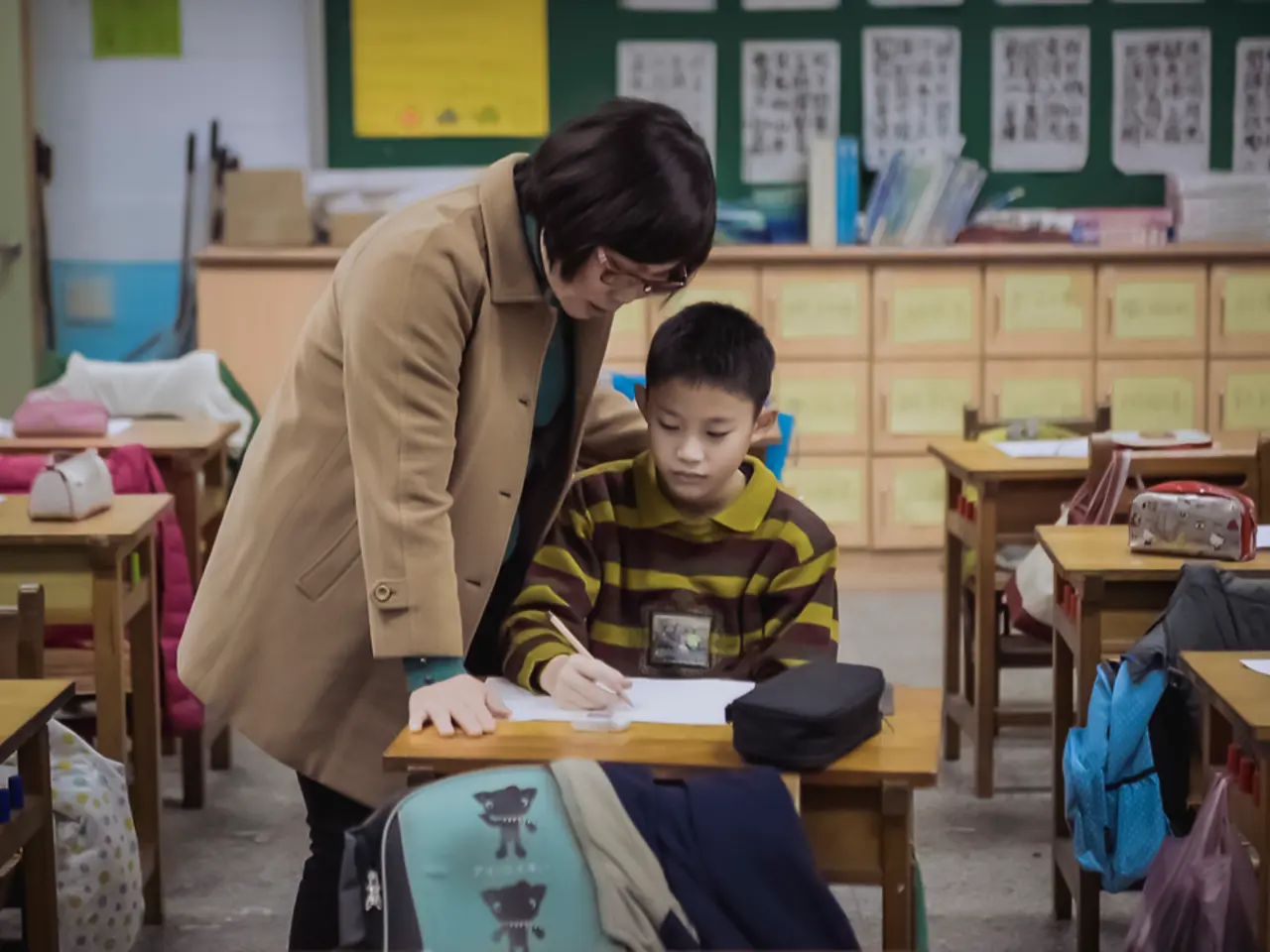Improving Education through Feedback: A Methodical Plan of Action
In the realm of primary education, effective feedback delivery plays a pivotal role in fostering student learning and development. This approach employs various methods to ensure feedback is understood, implemented, and leads to growth.
At the heart of this process lies the concept of constructive feedback, which involves providing specific, actionable insights that encourage learning. Engaging students through such feedback helps them take ownership of their learning journey and develop critical thinking skills.
Timeliness in feedback is another crucial factor. Immediate feedback allows for quick adjustments in learning strategies, enabling students to capitalize on their successes and address their shortcomings promptly.
Involving students in the feedback process, such as self-assessment and peer reviews, is another effective strategy. This not only empowers students but also fosters a sense of ownership over their learning.
Effective communication strategies for teachers include regular check-ins, using open-ended questions, and personalized feedback to tailor interactions to individual student needs. These methods help create a trusting and collaborative environment that encourages continuous reflection and improvement.
Analyzing feedback involves systematically examining input from various stakeholders to improve educational practices and learning outcomes. This process can help identify common themes and patterns in student responses, providing valuable insights for teachers to adjust their teaching methods.
Involving parents in the feedback process plays a pivotal role in enhancing student learning outcomes. Their insights can reinforce messages conveyed through feedback and foster a growth mindset in children.
A feedback-rich environment is characterized by open, constructive communication that encourages continuous reflection and improvement among students and educators. This environment is created by providing timely, specific, and constructive feedback aligned with clear learning objectives, fostering a trusting and collaborative environment (including peer feedback), and using varied feedback methods tailored to individual learning styles.
Transforming feedback into actionable learning involves interpreting insights gathered from feedback and applying them effectively to improve student outcomes. This can be achieved through goal setting and fostering self-reflection among students.
In primary education, feedback is not just about correcting errors but also reinforcing positive behaviors, promoting self-reflection, and correcting misunderstandings. The best strategies for implementing effective feedback involve providing timely, specific, and constructive feedback aligned with clear learning objectives, fostering a trusting and collaborative environment, and using varied feedback methods tailored to individual learning styles. By integrating student voice and reflection, these strategies strengthen feedback effectiveness by engaging learners actively in the process.
This approach creates a feedback-rich environment that supports sustained learning progress, student motivation, and a collaborative classroom culture in primary education.
In the context of educational-and-self-development, e-learning platforms can significantly benefit from incorporating professional development courses focused on instructional strategies that foster effective feedback delivery. These strategies, aligned with clear learning objectives, can engage learners actively in the feedback process, ensuring prompt learning, critical thinking development, and constructive growth.
To further enhance learning outcomes in primary education, schools could incorporate various feedback strategies tailored to individual student learning styles, such as peer reviews and personalized feedback. These strategies can help transform feedback into actionable learning, promoting self-reflection and fostering a continuous improvement mindset.




